Affiliate links on Android Authority may earn us a commission. Learn more.
HUAWEI MatePad Pro (2021) review: High-end hardware, questionable apps
July 11, 2021
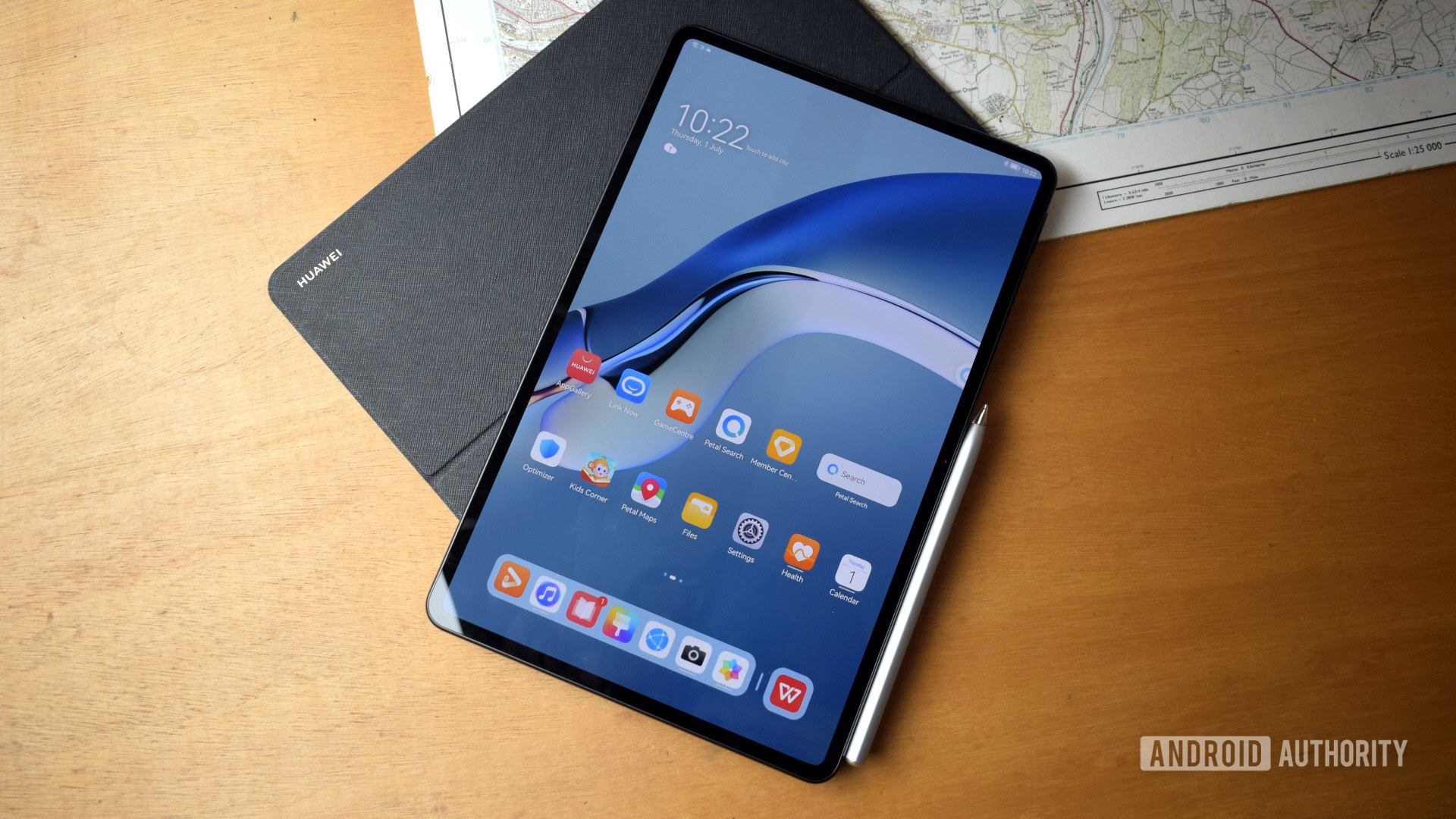
Today we’re reviewing the 12.6-inch HUAWEI MatePad Pro (2021), an updated, larger successor to HUAWEI’s 2020 10.6-inch Android tablet. Powered by HUAWEI’s in-house Harmony OS, the tablet’s selling point is clearly Apple iPad Pro aesthetics without the ludicrous Cupertino price tag.
After years in the wilderness, there are finally signs of life in the Android tablet market, with the Samsung Galaxy Tab S7 packing in some of the best hardware around. So what is HUAWEI offering to tempt us with its latest MatePad Pro?
What you need to know about the HUAWEI MatePad Pro (2021)
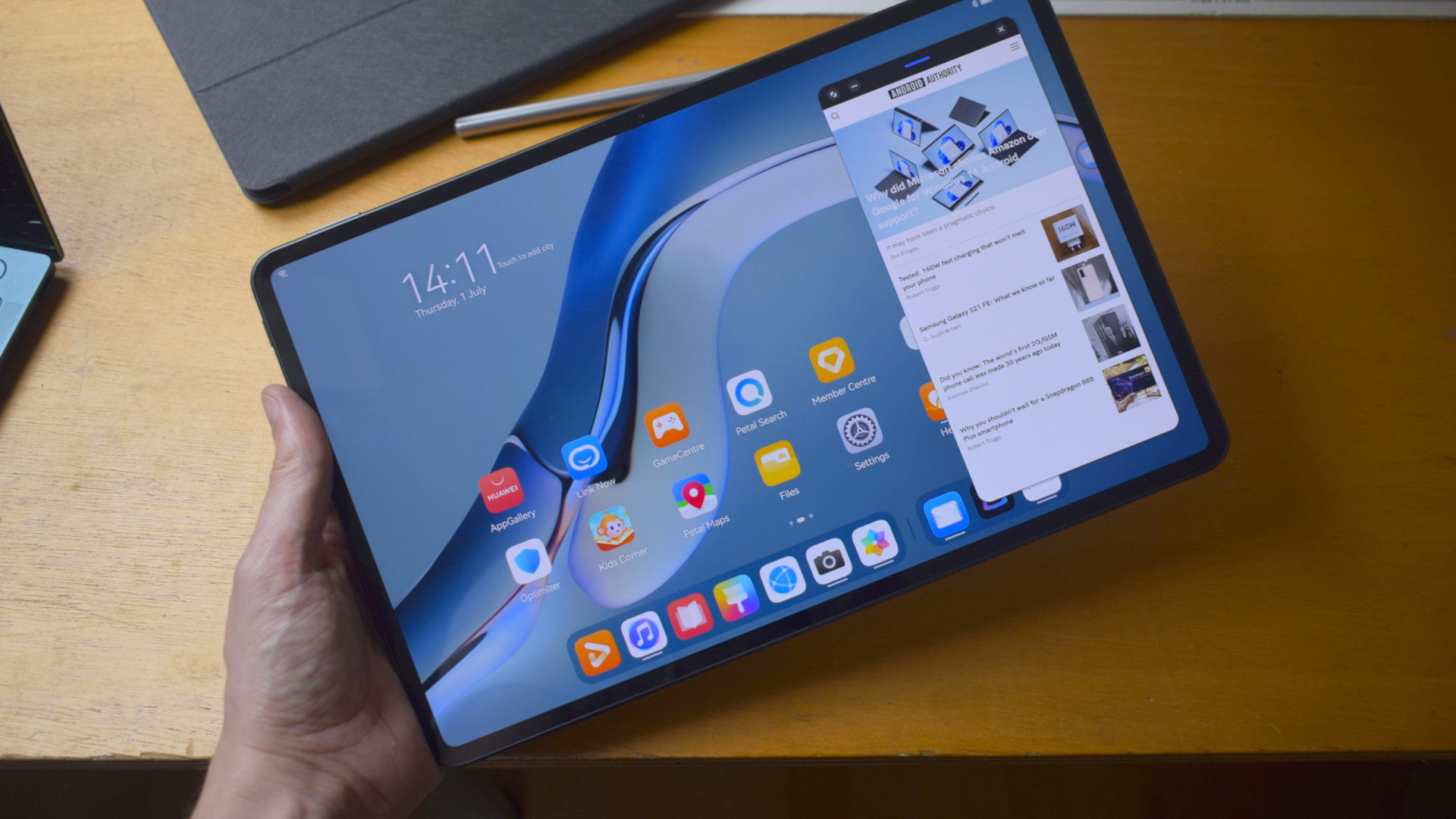
- HUAWEI MatePad Pro (2021) – 128GB: 4,999 yuan (~$783)
- HUAWEI MatePad Pro (2021) – 256GB: €799.99 / 5,499 yuan (~$861)
- HUAWEI MatePad Pro (2021) – 256GB + keyboard + stylus: 6,699 yuan (~$1,049)
- HUAWEI MatePad Pro (2021) – 256GB with 5G: 7,999 yuan (~$1,253)
With a new, larger 12.6-inch OLED display, 8GB RAM, up to 256GB storage, and a more powerful Kirin 9000E processor, the HUAWEI MatePad Pro 2021 edition sets out to be a more premium machine than its previous outing. The tablet comes in Wi-Fi-only and a more expensive 5G model, should you require data on the go. The tablet also sports an upgraded Harmony OS 2 operating system but misses out on Google apps and services as a result.
HUAWEI also offers a more direct successor to last year’s model with a 10.8-inch 2021 version. This tablet packs a not-quite-flagship-class Snapdragon 870, smaller 7,250mAh battery, and sticks with a 60Hz LCD for its display technology. Fortunately, the tablet offers the same 8GB RAM and 128/256GB memory options as its bigger sibling.
As well as a revamped tablet, HUAWEI is also on its second-generation M-Pencil stylus, sporting higher precision for handwriting and automatic Bluetooth pairing. There’s also a new Smart Magnetic Keyboard to go with the tablet, which helps make the most of the pre-installed copy of WPS Office. Neither accessory comes with the tablet as standard — unless you opt for the introductory offer, which bundles them for free — but you can purchase them individually or as a set.
HUAWEI includes a 40W SuperCharge plug in the box. This is bundled alongside a USB-C to USB-A adapter cable, a USB-C headphone adapter dongle, and SIM tool so you can fit a NM memory card into the underside of the tablet, should you require additional storage.
What’s new with the revamped hardware?
Although the design aesthetic remains heavily inspired by Apple’s latest iPad Pro, there’s a lot of new hardware onboard the HUAWEI MatePad Pro (2021).
For starters, the tablet has a large 12.6-inch OLED display with a 2,560 x 1,600 resolution. It supports a wide DCI-P3 color gamut which looks wonderful for apps, games, and movies, although I wouldn’t have minded a 90Hz or higher refresh rate, rather than a basic 60Hz panel. At just 6.7mm thin and weighing 630g, the tablet’s form factor remains manageable in one hand and is very comfortable to hold in two.
Huawei's tablet looks and feels like a premium device.
There’s a bigger battery on board this year too. The 10,050mAh cell will easily take you through a full day of video playback, usually resulting in a couple of days of use before reaching for the plug. The 40W charger takes almost two hours to fully charge this huge battery, so the tablet would have benefitted from laptop-grade 60W charging. The HUAWEI MatePad Pro (2021) also supports USB Power Delivery albeit at a much slower 12.5W, along with wireless and reverse wireless charging.
The tablet sports a power button on the upper left side, flanked by a volume rocker on top. The USB-C port lies at the other end, so it’s on the right side in landscape and the bottom when holding the tablet in portrait. Speaker grills extend almost all the way along both sides of the tablet so you can’t muffle the sound with your hands.
Overall, the HUAWEI MatePad Pro (2021) is a very nicely constructed tablet. The changes all add up to a much more compelling package compared to last year and there’s really very little to nitpick about with regards to hardware.
How’s the OS and software?
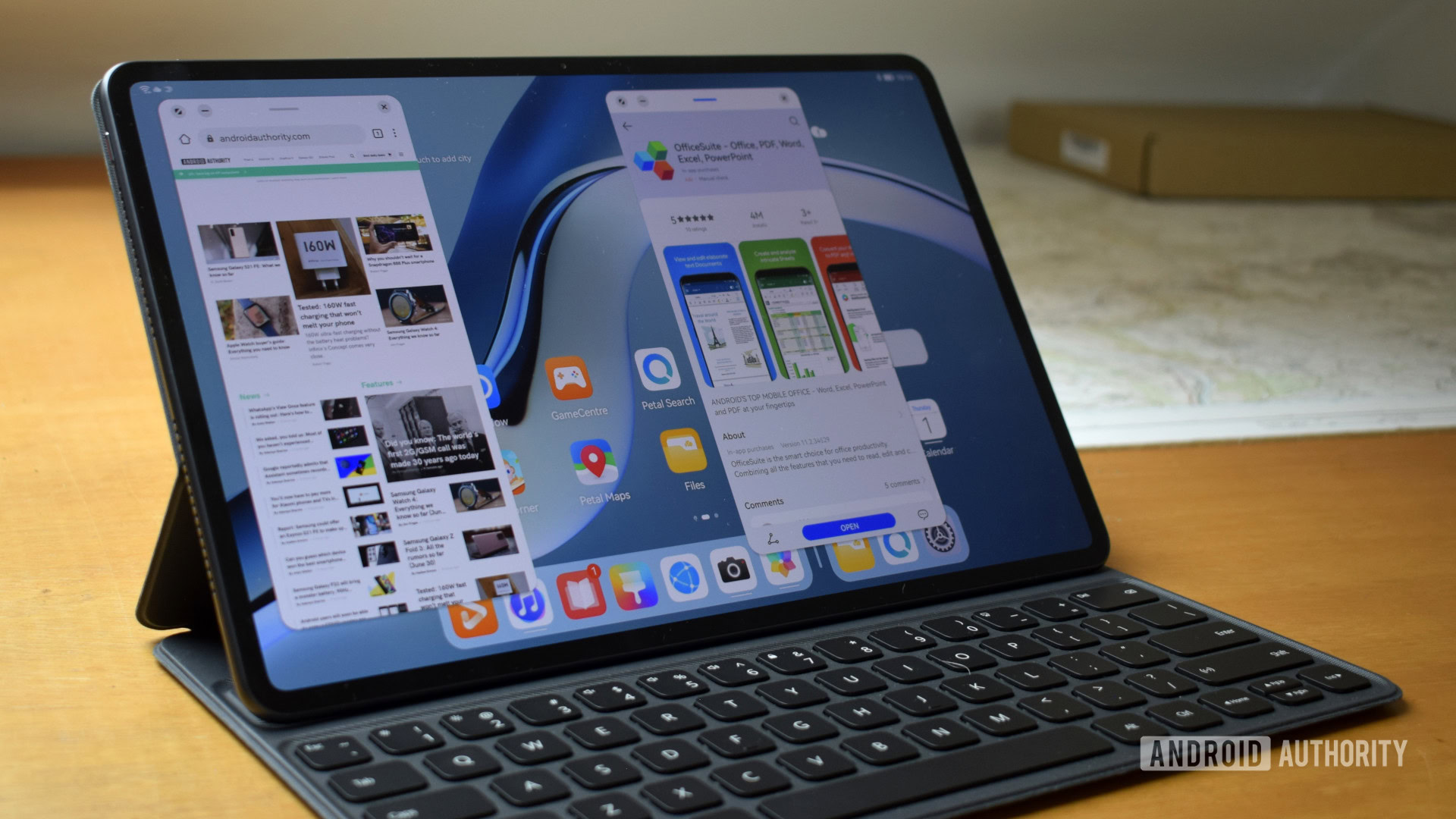
Unfortunately, you can’t talk about HUAWEI products in 2021 without wondering about the software situation. The HUAWEI MatePad Pro runs the company’s own Harmony OS, but functionally acts and performs like an Android tablet — albeit one that doesn’t have access to Google Mobile Serivces. That means no Google Play Store, so you’ll be sourcing apps from either HUAWEI’s own App Gallery or third-party stores.
Harmony OS itself is rather good for a tablet OS, even if the UI is heavily Apple-inspired (see the app dock), and isn’t really a game-changer from its previous EMUI Android skin. Powered by HUAWEI’s Kirin 9000E chipset, the OS is snappy and smooth. It also offers a smorgasbord of handy features, such as app shortcuts and a side dock, draggable windows, system-wide dark mode, and support for HUAWEI’s multi-screen collaboration with compatible phones and monitors. The settings menu, notification shade, and quick settings are all clean and simple to navigate. At its core, Harmony OS does everything you want and does it well.
Sadly, the apps situation remains unsatisfactory for most users. App Gallery still only offers a limited selection of popular Western apps and those that are pre-installed are bloated with ads and trial prompts. Case in point, HUAWEI Video has a tiny tucked away icon for local video files, but tabs worth of free and paid content. I’m not really sure why anyone outside of China would sign up for HUAWEI Video+ or any of the other advertised video services, as the content is really not targeted at Western audiences.
Worse though is that virtually every HUAWEI app asks you for permission to send push notifications and SMS messages to “keep you updated” on offers and the like. This is incredibly spammy for what is supposed to be a high-end product and it’s difficult to shake the uncomfortable feeling that your data is being harvested.
Many HUAWEI apps are littered with free trials, coupons, 'recommendations', and membership options.
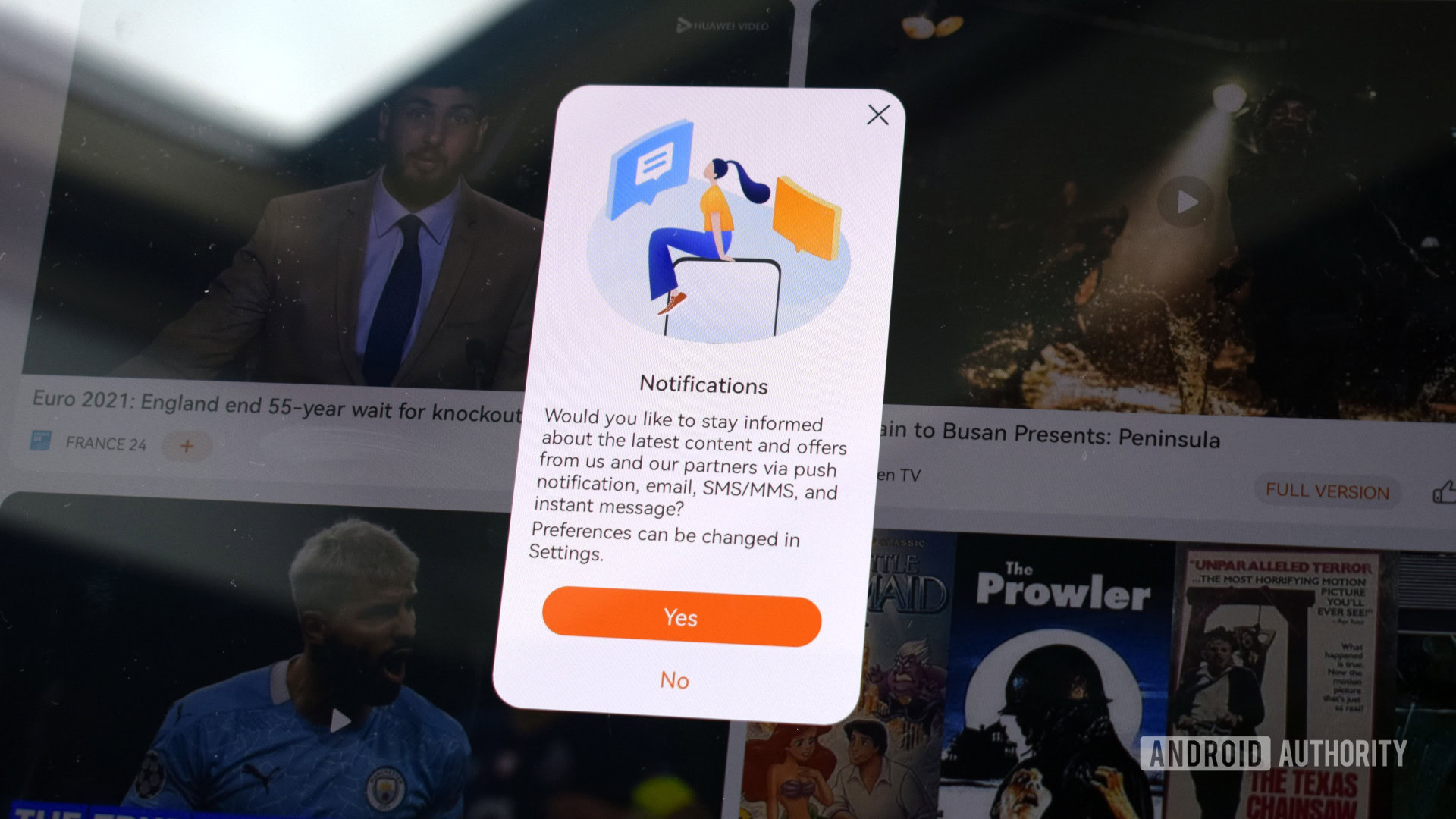
The third-party app situation is better but remains a compromised experience. While Petal Search can find a decent number of apps, it doesn’t always pull the latest versions available. I attempted to install Netflix and Jellyfin to set the tablet up for media use, but Petal Search installed out-of-date versions from APKPure. I had to manually search for the apps on the website to find the latest APK files, which obviously isn’t very good from either a feature or security standpoint. I also received an unsafe site warning from my ISP when Petal Search diverted me to Aptoide for APKs. Still, if you want to use your tablet for Facebook, Twitter, and the like, you can get hold of these apps after jumping through a few hoops.
Software is such an important part of every piece of technology and while Harmony OS is solid enough, the rest of the app experience on the MatePad Pro is significantly worse than other platforms. Unless you’re already sold on HUAWEI’s ecosystem, I wouldn’t recommend jumping into it.
How are the accessories?
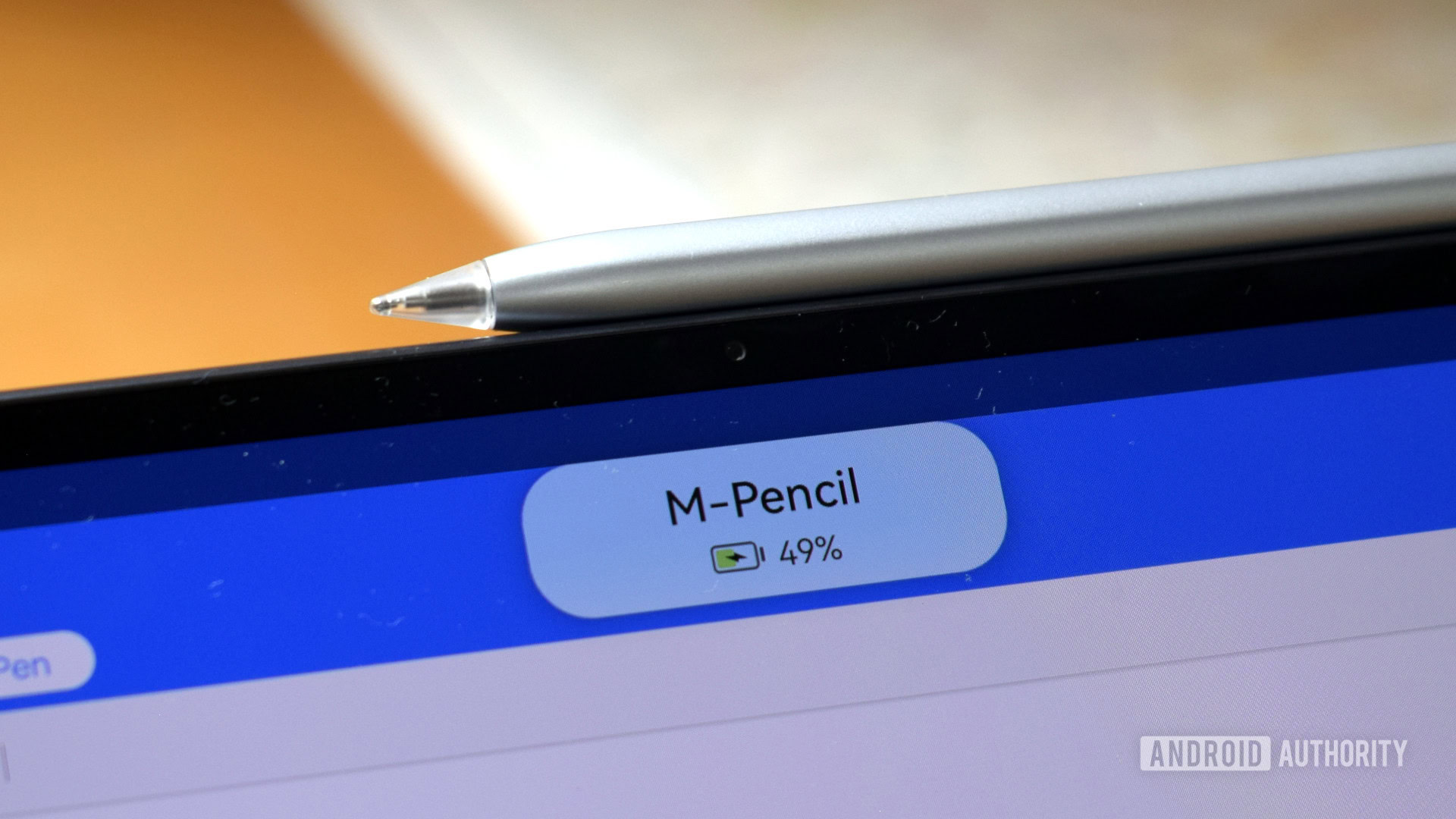
The second-generation M-Pencil and Smart Magnetic Keyboard are optional extras for the HUAWEI MatePad Pro. You’ll probably want the stylus, at least, if for no other reason than helping to keep the screen fingerprint-free.
Huawei’s M-Pencil is very accurate when it comes to pointing, handwriting, and drawing, and it’s a pleasing weight in the hand. The stylus charges wirelessly when stuck to the magnetic spot on the top of the tablet, which is very smart. While the hardware is well-thought-out, the software is a little more finicky. Handwriting-to-text isn’t always accurate when spelling less common words and it’s a little annoying to have to start writing in text fields rather than anywhere on the screen. It also doesn’t offer any fancy features like Samsung’s S Pen, such as Air Actions or a click button.
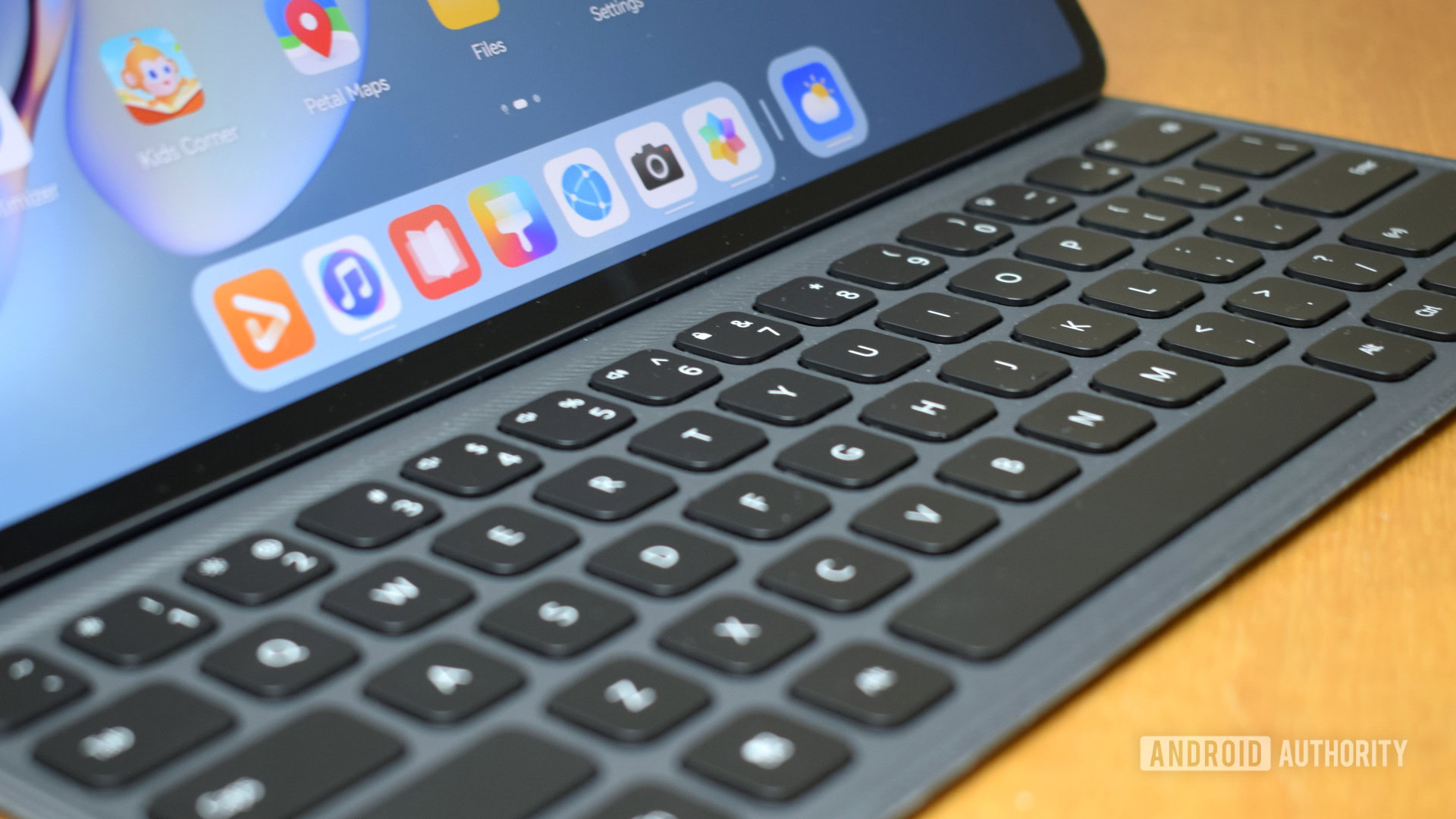
The Smart Magnetic Keyboard is more of a mixed bag. The magnetic elements work well, snapping snugly to the back of the HUAWEI MatePad Pro and allowing for two different levels of tablet tilt. Like the stylus, it connects seamlessly via Bluetooth. However, as is typical with keyboard covers, the keys themselves are ultra-slim so there’s very little travel. There are also large gaps between the keys, so it’s unforgiving when speed typing. It’s a decent enough keyboard for web browsing and emails, but I wouldn’t want to type 1,000 words with it.
HUAWEI bundles MyScript’s Nebo and Calculator apps to make use of the stylus, and they both show off just how well stylus-to-text technology can work. There’s also a copy of WPS Office pre-installed for documents, spreadsheets, etc. They’re all much better quality than some of HUAWEI’s other pre-installed apps.
Anything else?
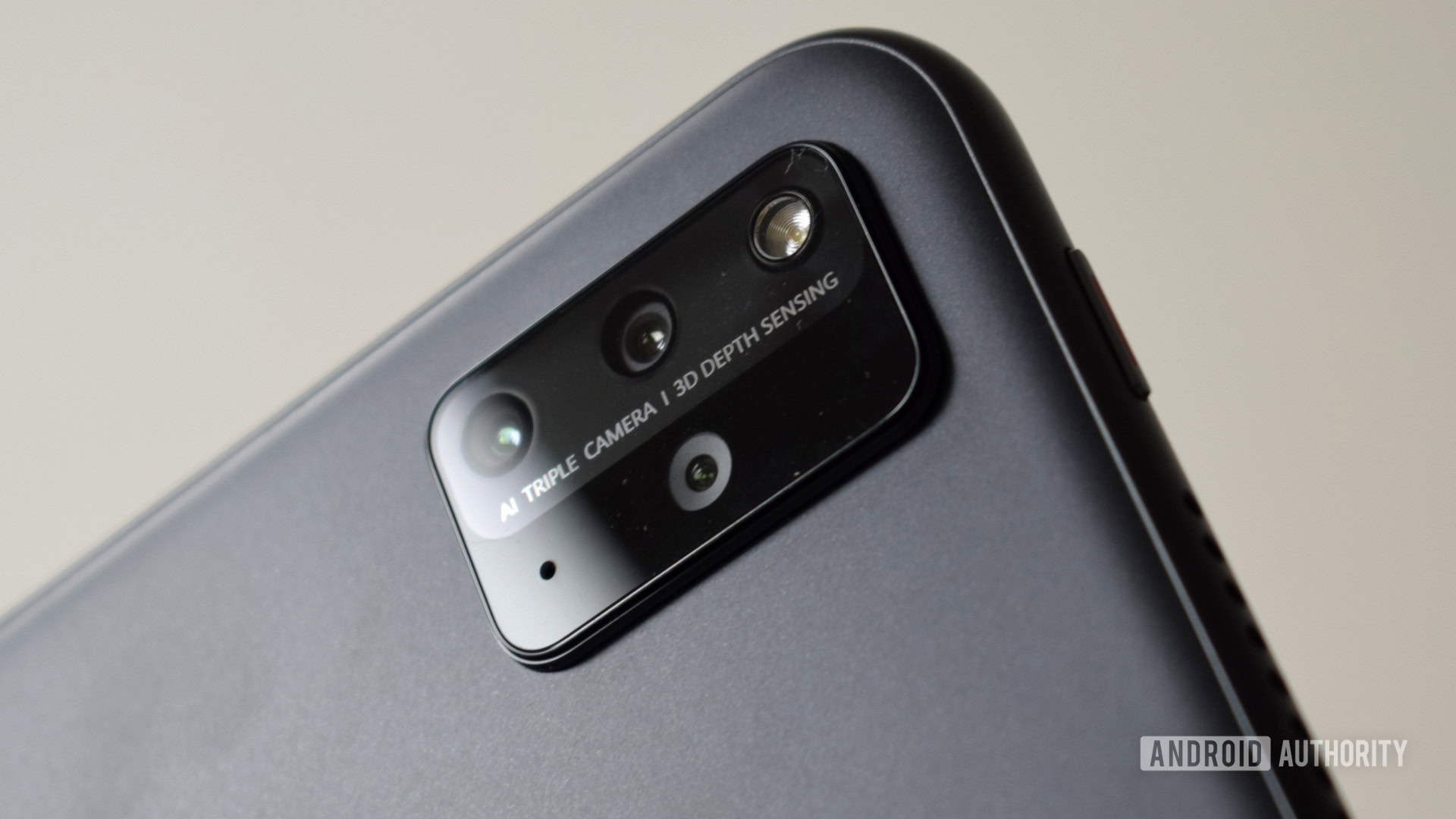
- Battery life: Easily lasts a full day or two of heavy use and can make it into a third day on a single charge with lighter use.
- Speakers: Pretty good sounding for a thin tablet. Four grill openings ensure your hands don’t muffle the sound when holding the tablet.
- Camera: For a tablet, the MatePad Pro takes acceptable pictures in good light but the main camera lacks detail. The wide-angle produces images with very heavy processing. The front-facing camera is just about passable for video calls but quality quickly falls off in low light.
- Charging: 40W proprietary charging is just about enough power here. However, we’d prefer to see support for fast universal standards to ensure the device fast charges with third-party accessories too. The tablet supports 27W wireless charging, but you’ll need a HUAWEI dock to achieve the fastest speeds.
HUAWEI MatePad Pro (2021) specs
| HUAWEI MatePad Pro (2021) | |
|---|---|
Display | 12.6-inch OLED 2,560 x 1,600 pixels 240ppi 90% screen-to-body ratio DCI-P3 |
Processor | HUAWEI Kirin 9000E |
RAM | 8GB |
Storage | 256GB NM memory card (256GB) |
Camera | Rear Main: 13MP camera ƒ/1.8 aperture, AF, 4K video Rear Wide: 8MP f/2.4 aperture, 3D depth Front: 8MP ƒ/2.0 aperture, fixed focus, 1080p video |
Battery | 10,050mAh |
Headphone jack | No |
Dimensions | 184.7 x 286.5 x 6.7mm |
Weight | 609g |
Colors | Olive Green, Matte Grey |
Accessories | M-Pencil (Not included) Smart Magnetic Keyboard case (Not included) |
Value and competition
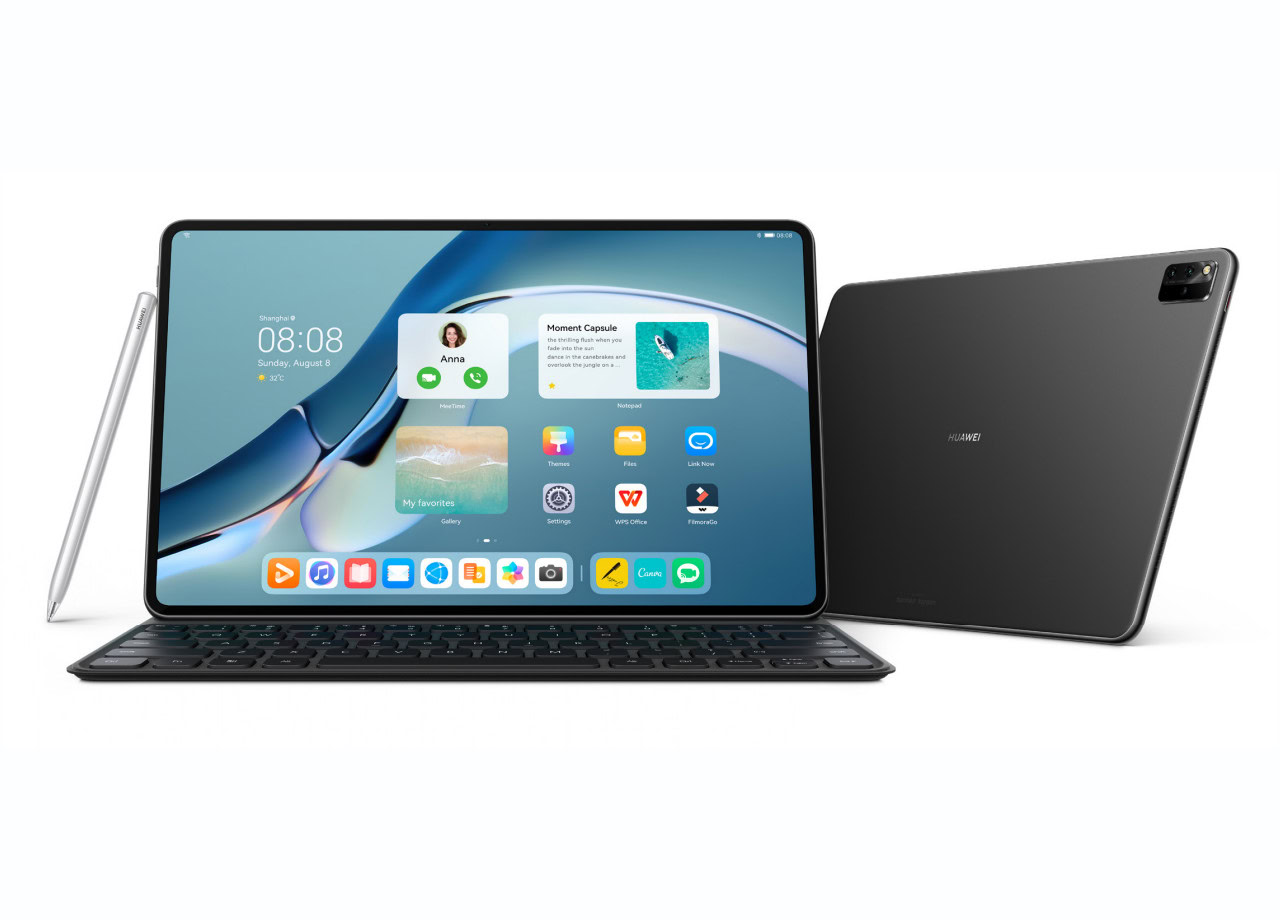
The 256GB, Wi-Fi-only model costs €799.99, making this one of the more expensive non-Apple tablets on the market. HUAWEI’s introductory offer bundles the M-Pencil and keyboard case in for free, which is a decent deal. On their own, these cost €99 and €149 respectively.
The tablet’s biggest competitor is, therefore, the Samsung Galaxy Tab S7 and S7 Plus. With prices ranging from $580/€599 up to $899/€879 (not including the stylus or cover) Samsung’s tablet offers a very competitive hardware package at a similar price. Here you’re trading slightly older performance for a flashier 120Hz display. Plus you won’t have trouble finding all your favorite apps.
If you’re looking for a tablet with more of a productivity focus, the Windows-equipped Surface Go 2 is smaller but well worth a look. There’s a more affordable entry point here at $400 / €459, although the cost quickly ramps up if you want 4G LTE connectivity, the more powerful Core M3 processor, and the almost obligatory Surface Go Type Cover.
The 12.9-inch iPad Pro remains the high-end tablet to beat, with its powerful M1 chip, improved front-facing cameras, and cutting-edge micro-LED display. However, it’s definitely the most expensive option, with prices starting at $1,099 / £999 / €1,199.
See also: The best Android tablets of 2021: Here are our top picks
HUAWEI MatePad Pro (2021) review: The verdict
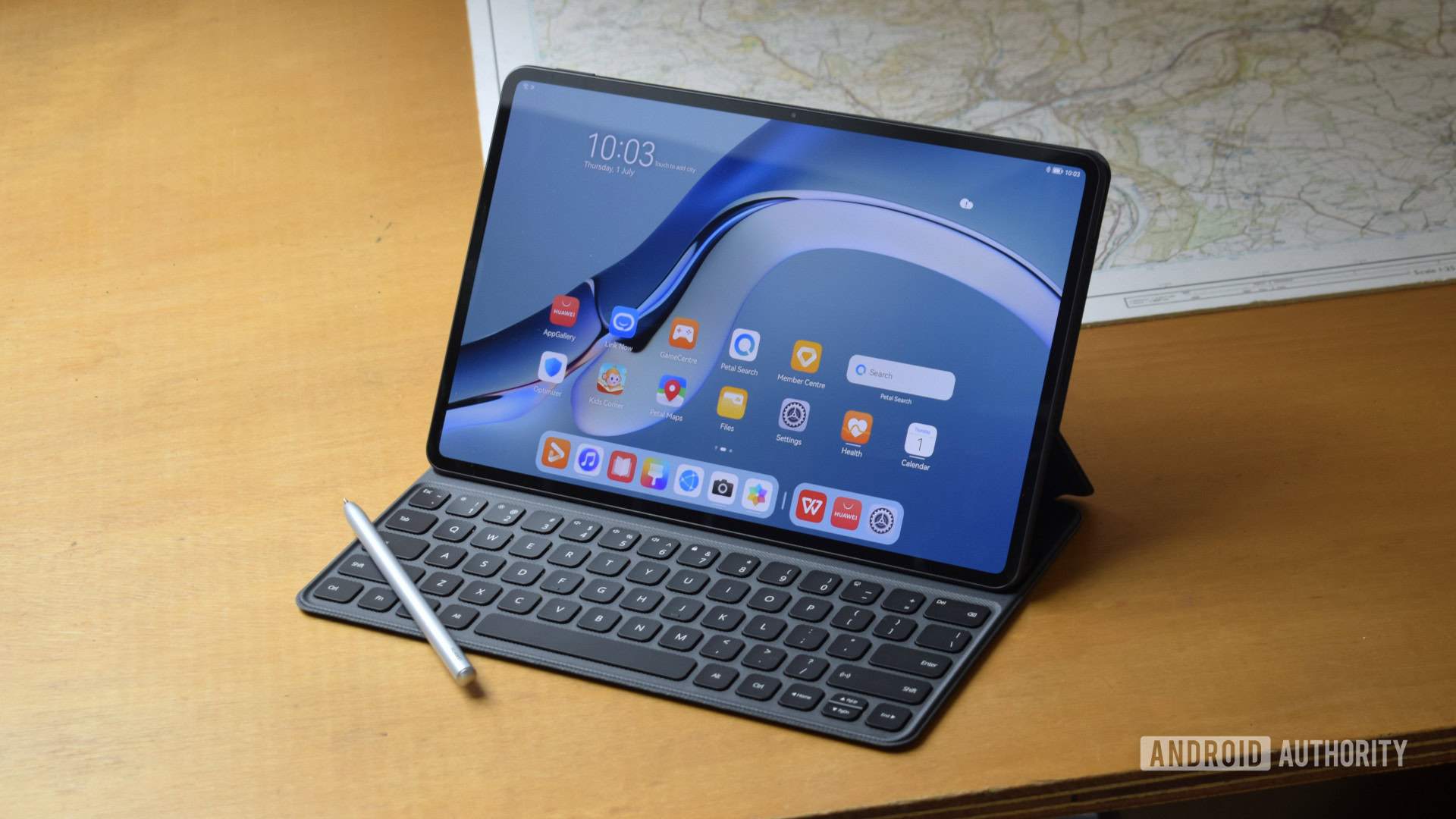
The HUAWEI MatePad Pro (2021) is a slick piece of hardware that certainly stands out as one of the more capable tablets around. With blazing-fast processing, a crisp vibrant display, and a decent stylus, the core package offers everything you’d want and helps to justify the price tag.
Harmony OS 2 is decent too, if not exactly groundbreaking. The core OS is sleek, sensibly laid out, and packs in useful additions to make it that bit more productivity-friendly. This is especially true if you’ve bought into the broader HUAWEI ecosystem, as HUAWEI Share and Multi-screen Collaboration are rather neat features. Despite all of HUAWEI’s talk about Harmony OS, though, it’s still functionally no different to an Android tablet, so has the odd problem.
The HUAWEI MatePad Pro offers great hardware but its apps are an ad-riddled mess.
Software remains a problem for the company, and this time around it’s not the fault of US sanctions of missing Google apps. App procurement is still a mess of third-party sources that are at best a pain to navigate and at worst fail to provide the best results. The fact that my ISP warns me about some of HUAWEI’s APK sources is alarming. It’s just not a good setup for most users.
Despite app procurement still being a mess, HUAWEI seems more eager to push its multimedia ecosystem front and center to better compete with the likes of Apple, Google, and Samsung. But at the moment, the services have neither the content nor the refinement to command premium subscription prices. The company also seems to think users like to be bombarded with notifications, emails, and texts from its advertising partners. HUAWEI might want the ad money, but this has the adverse effect of cheapening its tablet experience and interfering with the core usability of its apps.
Thank you for being part of our community. Read our Comment Policy before posting.